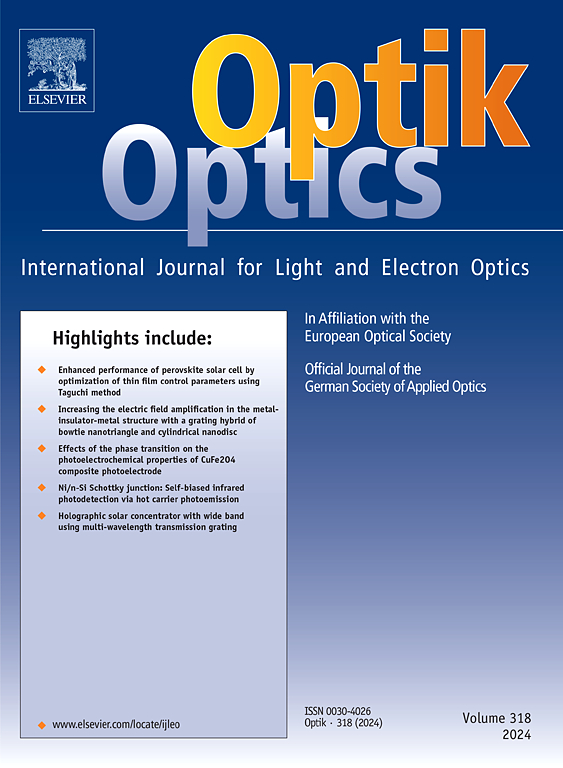中心元校正、压力和温度对掺杂GaAs/GaAlAs多层量子盘非线性光学整流和二次谐波产生的影响
IF 3.1
3区 物理与天体物理
Q2 Engineering
引用次数: 0
摘要
利用有效质量近似,我们研究了GaAs/AlxGa1−xAs核壳MSQDs中的电子态,评估了静水压力(P)和温度(T)对能带结构和波函数的影响。此外,我们还研究了中心池校正、压力和温度对二次谐波产生(SHG)和非线性光学整流(NOR)的影响。我们的研究结果表明,外部压力导致能量水平降低,导致SHG和NOR峰值位置的红移,而外部温度使能量水平升高,导致蓝移。压力也增强了SHG和NOR的峰值强度。但当压力超过20Kbar时,峰值幅度开始减小。另一方面,温度持续降低峰值强度。此外,我们还发现,通过选择合适的杂质类型,NOR和SHG都可以得到显著改善。该研究强调了通过外部刺激优化msqd非线性光学特性的潜力,从而实现了光子器件的新设计。本文章由计算机程序翻译,如有差异,请以英文原文为准。
Central cell correction, pressure and temperature effects on the nonlinear optical rectification and second harmonic generation in a doped GaAs/GaAlAs multi-layer quantum disk
Using the effective mass approximation, we investigate electron states in core/shell MSQDs, assessing the effects of hydrostatic pressure (P) and temperature (T) on band structure and wave functions. Additionally, we examine the influence of central cell correction, pressure, and temperature on second harmonic generation (SHG) and nonlinear optical rectification (NOR). Our findings indicate that external pressure causes a decrease in energy levels, leading to a redshift in the peak positions of SHG and NOR, while external temperature increases energy levels, resulting in a blueshift. Pressure also enhances the peak intensity of SHG and NOR. However, when the pressure exceeds , the peak magnitude begins to decrease. Temperature, on the other hand, consistently diminishes the peak intensity. Additionally, we have discovered that both NOR and SHG can be significantly improved by selecting the appropriate type of impurities. This study highlights the potential for optimizing nonlinear optical properties through external stimuli in MSQDs, enabling new designs for photonic devices.
求助全文
通过发布文献求助,成功后即可免费获取论文全文。
去求助
来源期刊

Optik
物理-光学
CiteScore
6.90
自引率
12.90%
发文量
1471
审稿时长
46 days
期刊介绍:
Optik publishes articles on all subjects related to light and electron optics and offers a survey on the state of research and technical development within the following fields:
Optics:
-Optics design, geometrical and beam optics, wave optics-
Optical and micro-optical components, diffractive optics, devices and systems-
Photoelectric and optoelectronic devices-
Optical properties of materials, nonlinear optics, wave propagation and transmission in homogeneous and inhomogeneous materials-
Information optics, image formation and processing, holographic techniques, microscopes and spectrometer techniques, and image analysis-
Optical testing and measuring techniques-
Optical communication and computing-
Physiological optics-
As well as other related topics.
 求助内容:
求助内容: 应助结果提醒方式:
应助结果提醒方式:


